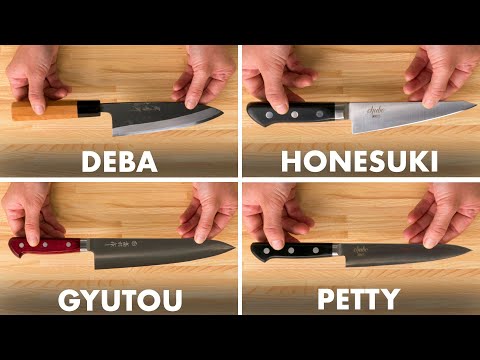
ef02679d3574b777c18ecdac8cb52579
Welcome to our guide to Japanese kitchen knives! In this article, we will be discussing the nakiri knife, a traditional Japanese knife used for cutting vegetables. We will explore the history of the nakiri knife, its design, and its uses in the kitchen. We will also discuss the differences between the nakiri knife and other Japanese kitchen knives, such as the santoku and the usuba. Finally, we will provide some tips on how to choose the right nakiri knife for your kitchen. So, let’s get started!
What is the point of a Nakiri knife
A Nakiri knife is a traditional Japanese vegetable knife. It is characterized by its rectangular blade, which is double-beveled and has a flat edge. The blade is usually made of stainless steel and is typically between 5 and 7 inches long. The handle is usually made of wood or plastic and is designed to fit comfortably in the hand.
The Nakiri knife is designed specifically for cutting vegetables. Its flat blade allows for a clean, precise cut, and its thin blade makes it easy to maneuver around the vegetables. The blade is also sharp enough to easily cut through tough vegetables such as carrots and potatoes.
The Nakiri knife is also great for chopping herbs and other small ingredients. Its thin blade allows for a precise cut, and its sharp edge makes it easy to mince herbs and other small ingredients. The Nakiri knife is also great for slicing fruits and vegetables into thin slices.
The Nakiri knife is a versatile tool that can be used for a variety of tasks in the kitchen. It is perfect for chopping, slicing, and mincing vegetables, herbs, and other small ingredients. It is also great for slicing fruits and vegetables into thin slices. The Nakiri knife is an essential tool for any home cook who wants to prepare delicious meals with ease.
Is a Santoku better than a Nakiri
When it comes to Japanese kitchen knives, the Santoku and Nakiri are two of the most popular options. Both knives are designed for cutting vegetables, but they have some distinct differences that make them better suited for different tasks. In this article, we’ll compare the Santoku and Nakiri to help you decide which one is best for your needs.
Santoku
The Santoku is a general-purpose knife that is great for slicing, dicing, and mincing. It has a straight edge and a sheep’s foot blade shape, which makes it easy to control and maneuver. The Santoku is also slightly lighter than the Nakiri, making it a good choice for those who are new to using Japanese kitchen knives.
Nakiri
The Nakiri is a traditional Japanese vegetable knife. It has a straight edge and a rectangular blade shape, which makes it ideal for chopping and slicing vegetables. The Nakiri is slightly heavier than the Santoku, which gives it more power and makes it better suited for tougher tasks.
Conclusion
Both the Santoku and Nakiri are great knives for cutting vegetables, but they are better suited for different tasks. The Santoku is a great all-purpose knife that is easy to control and maneuver, while the Nakiri is better suited for tougher tasks due to its heavier weight. Ultimately, the choice between the two comes down to personal preference and the type of tasks you plan to use the knife for.
Can I cut meat with a Nakiri
The Nakiri is a traditional Japanese vegetable knife, designed for cutting vegetables. It has a rectangular blade with a flat edge, and is usually made of stainless steel. The blade is usually quite thin, making it ideal for slicing vegetables. But can you use a Nakiri to cut meat?
The answer is yes, you can use a Nakiri to cut meat. However, it is not the ideal knife for the job. The thin blade of the Nakiri is not designed to handle the tougher texture of meat, and it may not be able to cut through the tougher cuts of meat. It is also not designed to handle the heavier weight of meat, so it may not be able to handle larger pieces of meat.
If you are looking for a knife to cut meat, then you should look for a knife with a thicker blade. A chef’s knife or a Santoku knife would be better suited for cutting meat. These knives have thicker blades that are designed to handle the tougher texture of meat, and they are also designed to handle the heavier weight of meat.
So, while you can use a Nakiri to cut meat, it is not the ideal knife for the job. If you are looking for a knife to cut meat, then you should look for a knife with a thicker blade. A chef’s knife or a Santoku knife would be better suited for cutting meat.
Is a Nakiri knife worth it
A Nakiri knife is a traditional Japanese vegetable knife that is used for chopping, slicing, and dicing vegetables. It is a versatile knife that can be used for a variety of tasks in the kitchen. But is it worth the investment?
The answer is yes. A Nakiri knife is a great addition to any kitchen. It is made from high-quality steel and is designed to be extremely sharp and durable. The blade is also designed to be thin and lightweight, making it easy to maneuver and control. The blade is also designed to be able to cut through vegetables with ease, making it a great tool for preparing meals.
The Nakiri knife is also a great choice for those who are looking for a knife that is easy to maintain. The blade is designed to be easy to sharpen and maintain, and it is also resistant to rust and corrosion. This makes it a great choice for those who want a knife that will last for years.
The Nakiri knife is also a great choice for those who are looking for a knife that is aesthetically pleasing. The blade is designed to be beautiful and elegant, and it is available in a variety of colors and finishes. This makes it a great choice for those who want a knife that looks great in their kitchen.
Overall, the Nakiri knife is a great choice for those who are looking for a knife that is versatile, durable, and aesthetically pleasing. It is a great addition to any kitchen and is worth the investment.
Thank you for reading our guide to Japanese kitchen knives. We hope you now have a better understanding of what a nakiri knife is and how it can be used in the kitchen. Goodbye and happy cooking!














